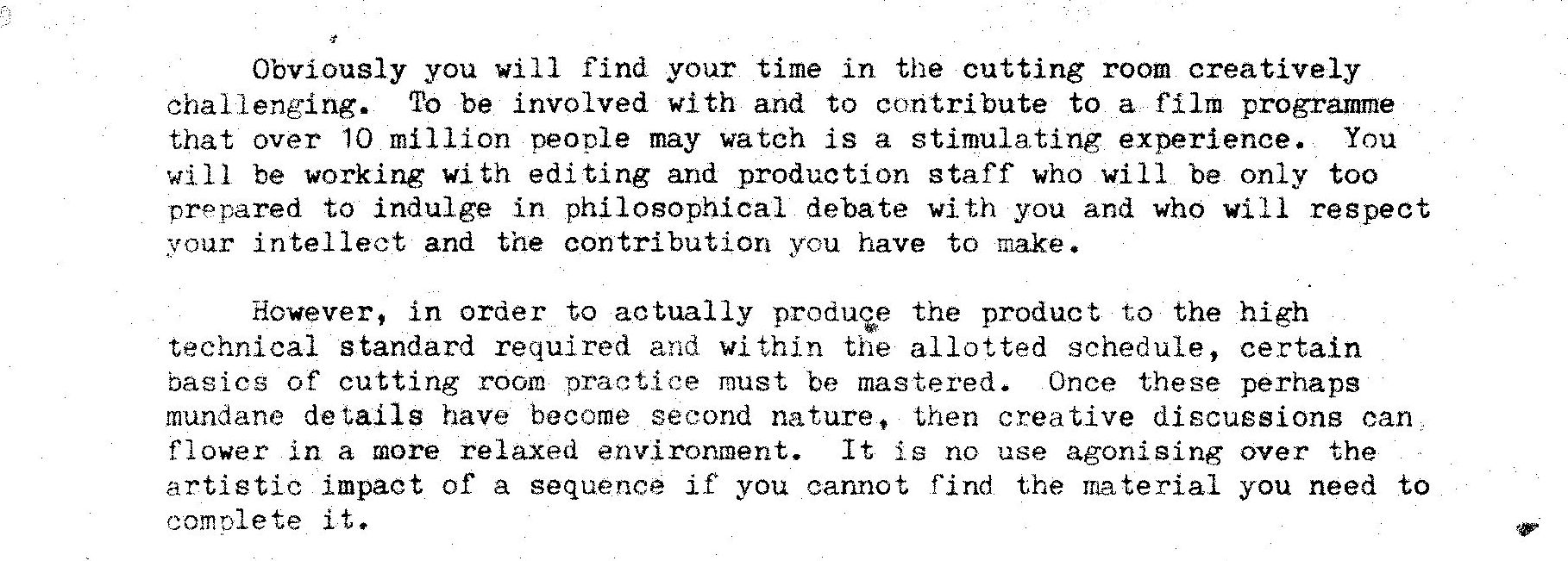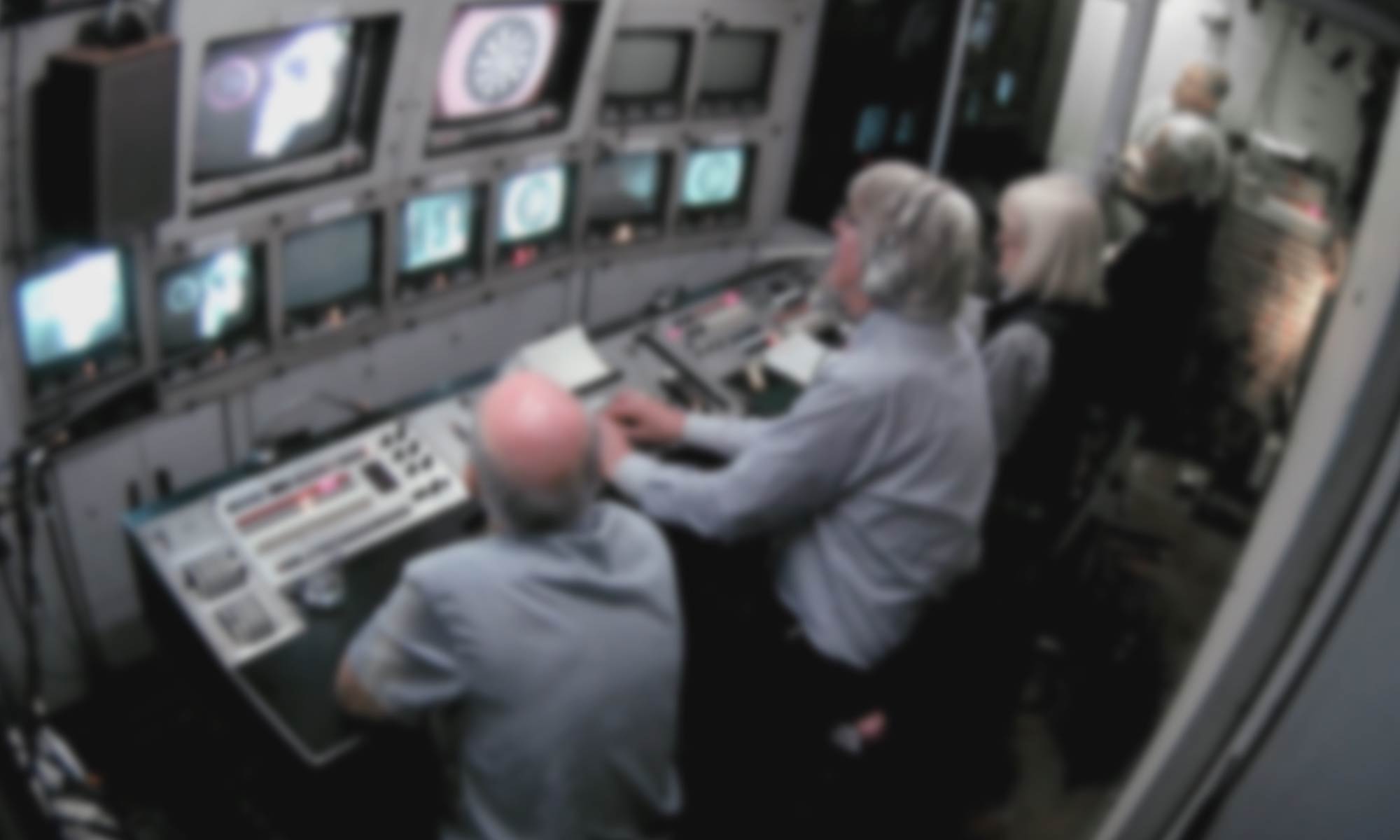Cutting Room Practice and Procedure (BBC Film Training Text no. 58)
This document, written by film editor Peter Evans in 1980, is a comprehensive guide to working in television film editing at the BBC.
It was written for new trainees taking their first steps in television film editing. Recruits came from a wide range of backgrounds: some had little or no previous experience of film; others had been keen amateur filmmakers or photographers. Many were recent college leavers or universty graduates, in their late teens or early twenties.

Cutting rooms had a distinct culture and new recruits had to quickly learn which tasks they were required to perform. As in any workplace, newcomers had to learn the skills they needed while understanding the customs and etiquette of the work environment.
16mm film editing: reenactment
Former film editors Oliver White and Dawn Trotman demonstrated the working practices of television film editing. Watch an excerpt below, or click here to explore further.
Evans’ document spells out the dual nature of the cutting room. On the one hand, it is a space in which creative people come together to make television programmes, sometimes engaging in “philosophical debate”.
On the other hand, the cutting room is a workshop: a practical space where “mundane” or “domestic” tasks must be carried out. Film rushes must be collected and sorted, logbooks must be kept up to date and supply cupboards fully stocked.
The guide was written during the peak of television film production. Documentaries, dramas, news and current affairs all relied on film for all or part of their programming.
Documentary series like Man Alive and Chronicle were produced entirely on film, as were some major dramas like Tinker, Tailer, Soldier, Spy and Boys from the Blackstuff. Dramas and sitcoms recorded on videotape in the studio often relied upon filmed ‘inserts’ to portray exterior locations: a technique often seen in Dad’s Army and Porridge and famously lampooned in a Monty Python’s Flying Circus sketch.
All of this film was edited by hand: digital non-linear film editing had not yet been invented. Film sequences had to be physically sorted and organised by assistant film editors. The task became more complex as an edit proceed, because the many cuts to the film rushes created ‘trims’ – short, often unused, sequences of films – which had to be sorted and kept track of.

Many of the tasks of the assistant film editor as described in this guide are now obsolete. Modern film editing, especially for television, is almost always done entirely digitally. Software takes much of the physical labour out of the task of sorting and tracking film sequences, and because digital editing software does not physically cut film, there are no longer any ‘trims’ to keep track of.
Of course, these technological changes do not diminish the skills of film editors and their assistants. The primary task of a film editor is not technical but creative: it is, as it always has been, to assemble filmed sequences so as to tell a strong story and to produce a finished product which matches – or improves upon – what writers, directors, producers and camera crews originally pictured. The success or failure of a film often rests upon the skill of an editor.
